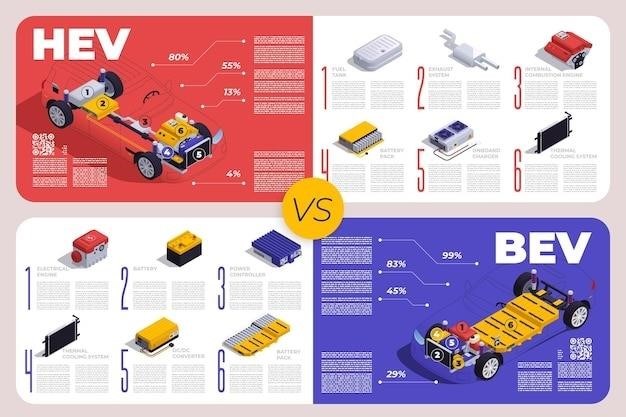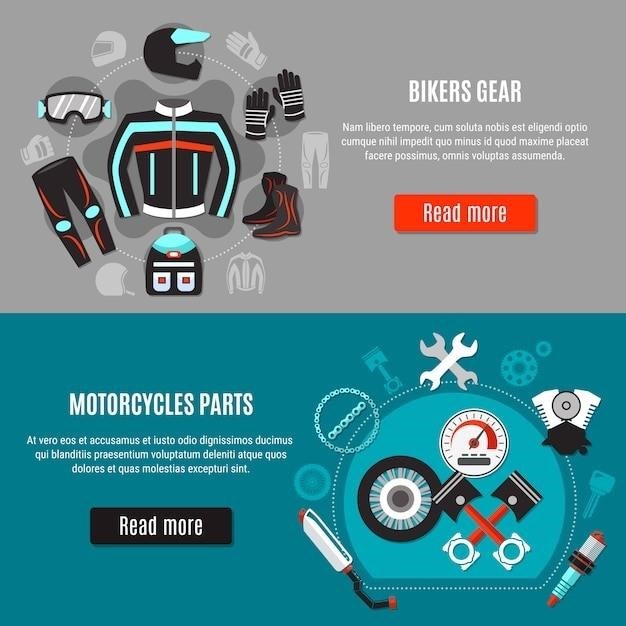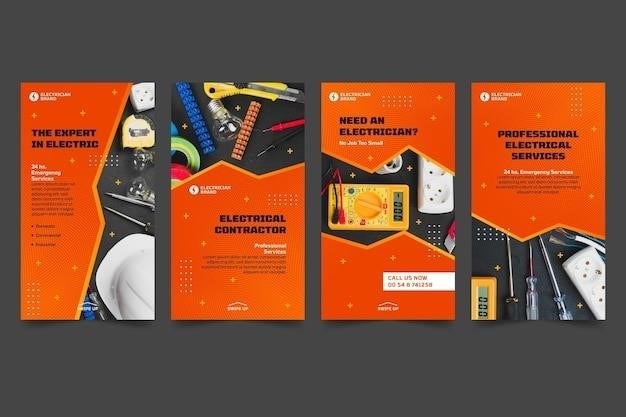Kidde Smoke and CO Alarm Manual: A Comprehensive Guide
Welcome to the comprehensive guide for your Kidde smoke and carbon monoxide (CO) alarms. This manual provides essential information for understanding, installing, operating, and maintaining your Kidde safety devices. This ensures optimal protection for you and your family against fire and CO hazards.
Kidde smoke and carbon monoxide (CO) alarms are essential devices designed to protect your home and family from the dangers of fire and carbon monoxide poisoning. Smoke alarms detect the presence of smoke, providing an early warning of a potential fire, allowing you time to evacuate safely. CO alarms, on the other hand, detect the presence of carbon monoxide, a colorless, odorless, and deadly gas produced by incomplete combustion.
Kidde, a leading manufacturer of fire safety products, offers a range of smoke and CO alarms designed to meet different needs and preferences. These alarms utilize advanced sensing technologies, such as ionization and photoelectric sensors for smoke detection and electrochemical sensors for CO detection. Some models offer combination smoke and CO detection, providing comprehensive protection in a single device.
Proper installation and maintenance of Kidde smoke and CO alarms are crucial for their effectiveness. This manual provides detailed instructions on how to install, test, and maintain your Kidde alarms to ensure they are functioning correctly. It also covers important safety information and guidelines to help you protect your home and family from fire and CO hazards. Remember to always read and understand the user guide before installing or operating your Kidde alarms.
Understanding Different Kidde Alarm Models
Kidde offers a diverse range of smoke and CO alarms, each designed with specific features and functionalities to cater to various needs and preferences. Understanding the different models is crucial for selecting the right alarm for your home and ensuring optimal protection.
Smoke Alarms: Kidde smoke alarms utilize either ionization or photoelectric sensing technology. Ionization alarms are generally more responsive to fast-flaming fires, while photoelectric alarms are more sensitive to slow-smoldering fires. Some models feature both technologies for comprehensive fire detection. They can be battery-operated, hardwired with battery backup, or utilize a 10-year sealed battery.
CO Alarms: Kidde CO alarms use electrochemical sensors to detect carbon monoxide. These alarms are available as standalone units or in combination with smoke alarms. Like smoke alarms, they come in battery-operated, hardwired with battery backup, and 10-year sealed battery options. Some models also feature digital displays showing CO levels.
Combination Alarms: These alarms combine both smoke and CO detection into a single unit, offering convenience and space-saving benefits. They are available in various power options and sensing technologies.
Smart Alarms: Kidde also offers smart alarms with Wi-Fi connectivity, allowing you to receive alerts on your smartphone and monitor your home’s safety remotely. These alarms often integrate with other smart home devices for enhanced protection.
Recommended Locations for Smoke and CO Alarms
Strategic placement of smoke and CO alarms is paramount for early detection and timely response to potential hazards. Following recommended guidelines ensures optimal coverage and maximizes the effectiveness of your alarms.
Smoke Alarms: Install smoke alarms inside each bedroom and outside each sleeping area. Place alarms on every level of your home, including the basement. For larger homes, consider installing additional alarms to ensure adequate coverage. If hallways are longer than 30 feet, install alarms at both ends. On sloped or cathedral ceilings, install alarms within 3 feet of the highest point.
CO Alarms: Install CO alarms in hallways near sleeping areas and on every level of your home. Since CO is a byproduct of combustion, place alarms near potential sources, such as furnaces, water heaters, and fireplaces. If you have an attached garage, install a CO alarm in the adjacent living area.
General Recommendations: Interconnect your alarms, so that if one alarm sounds, all alarms will sound, providing an early warning throughout the house. Test your alarms regularly to ensure they are functioning correctly. Replace batteries as needed, or consider using alarms with 10-year sealed batteries for hassle-free maintenance.
Locations to Avoid When Installing Alarms
Proper placement of smoke and CO alarms is crucial for accurate detection and to minimize nuisance alarms. Certain locations can hinder alarm performance or trigger false alarms, so avoiding these areas is essential for optimal functionality.
Avoid these locations for Smoke Alarms: Do not install near kitchens or bathrooms, where steam and cooking fumes can trigger false alarms. Keep alarms at least 10 feet away from these areas. Avoid placing alarms near windows, doors, or air vents, as drafts can interfere with smoke detection. Don’t install in dusty, dirty, or insect-infested areas, as these can contaminate the sensors.
Avoid these locations for CO Alarms: Do not install in garages, kitchens, or furnace rooms, as high levels of CO may be present temporarily. Avoid placing alarms in extremely cold or hot areas, as temperature extremes can affect sensor accuracy. Do not install in direct sunlight or near sources of humidity, as these conditions can damage the alarm.
General Recommendations: Avoid placing alarms behind furniture or curtains, which can obstruct airflow and reduce detection effectiveness. Do not install in dead air spaces, such as the peak of an A-frame ceiling or the corner where the wall meets the ceiling. Always follow the manufacturer’s instructions for specific placement guidelines.
Step-by-Step Installation Instructions

Installing your Kidde smoke and CO alarms correctly is vital for ensuring they function properly and provide timely alerts. Follow these steps carefully for a safe and effective installation.
- Preparation: Before you begin, gather necessary tools such as a drill, screwdriver, and possibly wire strippers (for hardwired models). Read the alarm manual thoroughly to understand the specific requirements for your model.
- Mounting Location: Select the appropriate mounting location based on the recommendations in this guide, avoiding areas prone to nuisance alarms.
- Mounting the Bracket: Use the mounting bracket provided with the alarm. For ceiling installation, position the bracket and mark the screw holes. Drill pilot holes if necessary, and then secure the bracket with screws. For wall installation, follow the same procedure, ensuring the bracket is mounted vertically.
- Connecting the Alarm: For battery-powered alarms, insert the batteries according to the polarity markings. For hardwired alarms, turn off the circuit breaker before connecting the wires. Match the colored wires (usually black to black, white to white, and red to red/orange for interconnect) and secure them with wire connectors.
- Attaching the Alarm: Align the alarm with the mounting bracket and twist it into place until it locks securely.
- Testing: After installation, test the alarm by pressing the test button. You should hear a loud alarm sound. If the alarm doesn’t sound, check the power source and connections.
Operating and Testing Your Kidde Alarm
Understanding how to operate and regularly test your Kidde smoke and CO alarm is crucial for maintaining its effectiveness and ensuring your safety. These alarms are designed for continuous operation, providing constant monitoring for smoke and carbon monoxide.
Testing Your Alarm: It’s recommended to test your Kidde alarm weekly. To test, locate the test button on the alarm’s cover. Press and hold the button for a few seconds. The alarm should emit a loud, distinct sound. This confirms that the alarm’s circuitry, horn, and battery (or power supply for hardwired units) are functioning correctly. If the alarm does not sound, immediately check the power source. Replace batteries if necessary, or inspect the wiring for hardwired models.
Normal Operation: During normal operation, the alarm may have a blinking light to indicate it’s powered and functioning. Refer to your specific model’s manual for details on the meaning of the light patterns. Some alarms also feature a memory function, indicated by a specific light pattern, to alert you if it has detected smoke or CO while you were away.
Alarm Sounds: Learn to differentiate between the alarm sounds for smoke and CO. Smoke alarms usually have a repetitive, loud beep pattern (e.g., three beeps followed by a pause). CO alarms may have a different pattern (e.g., four beeps followed by a pause). Knowing the difference will help you respond appropriately in an emergency.
Troubleshooting Nuisance Alarms (HUSH Feature)
Nuisance alarms, often triggered by cooking smoke, steam from showers, or dust, can be frustrating. Kidde alarms are equipped with a “HUSH” feature to temporarily silence these false alarms without compromising safety. Understanding how to troubleshoot these alarms and use the HUSH feature is essential for maintaining a safe and peaceful home.
Identifying Nuisance Alarms: A nuisance alarm typically occurs when there’s no actual fire or dangerous CO level. Look for obvious causes like cooking smoke or steam. If you suspect a nuisance alarm, ventilate the area by opening windows and doors.
Using the HUSH Feature: When a nuisance alarm sounds, press the “HUSH” button on the alarm. This will temporarily silence the alarm for a specific period, usually around 8-10 minutes. During this period, the alarm will not sound even if smoke or CO is present. Important: Do not use the HUSH feature if there’s a known fire or high CO level. Investigate the cause of the alarm before using HUSH.
Troubleshooting Persistent Nuisance Alarms: If nuisance alarms persist, consider these steps: Relocate the alarm if it’s near a kitchen or bathroom. Clean the alarm regularly to remove dust and debris. Ensure the alarm is not near vents or drafts that could carry irritants. If the problem continues, the alarm may be faulty and require replacement.
Maintenance: Cleaning and Battery Replacement
Regular maintenance is crucial for ensuring your Kidde smoke and CO alarms function properly. This includes routine cleaning and timely battery replacement. Neglecting these tasks can compromise the alarm’s ability to detect hazards, putting your safety at risk.
Cleaning Your Alarms: Dust and debris can accumulate inside the alarm, affecting its sensitivity. Clean your alarms at least every six months, or more frequently in dusty environments. Use a vacuum cleaner with a soft brush attachment to gently clean the exterior of the alarm. Avoid using water, detergents, or solvents, as these can damage the sensors.
Battery Replacement: Most Kidde alarms use replaceable batteries. Replace the batteries at least once a year, or when the alarm signals a low-battery warning (usually a chirp sound). Use only the recommended type of battery specified in the alarm’s manual. When replacing batteries, ensure proper polarity (+ and -) is observed. Some Kidde alarms have sealed, non-replaceable batteries that last for the alarm’s lifespan (typically 10 years). In this case, replace the entire alarm when it reaches its end-of-life.
Testing After Maintenance: After cleaning or replacing batteries, always test the alarm to ensure it’s functioning correctly. Press the test button and listen for a loud, clear alarm sound. If the alarm doesn’t sound, re-check the batteries or consider replacing the alarm.
Understanding Alarm Limitations
While Kidde smoke and CO alarms provide crucial protection, it’s important to recognize their limitations. No alarm system is foolproof, and understanding these limitations can help you enhance your overall safety strategy.
Smoke Alarms: Smoke alarms are designed to detect smoke particles, but they may not detect fire in its early stages if the smoke doesn’t reach the alarm quickly enough. Obstructions, closed doors, and distance from the fire source can all affect the alarm’s response time. Different types of smoke alarms (ionization and photoelectric) respond differently to various types of fires. Ionization alarms are generally more responsive to fast-flaming fires, while photoelectric alarms are more responsive to smoldering fires. For maximum protection, Kidde recommends installing both types of alarms.
CO Alarms: CO alarms detect carbon monoxide gas, which is odorless and invisible. However, CO alarms can only detect CO at the sensor. If CO is prevented from reaching the alarm, or if the concentration is too low, the alarm may not activate. CO alarms are not substitutes for smoke alarms and should be used in conjunction with them.
General Limitations: Alarms require a power source to function. Battery-powered alarms need regular battery replacements, while hardwired alarms may not work during power outages without battery backup. Alarms should be installed in accordance with manufacturer’s instructions and local codes. Regular testing is essential to ensure proper operation.
Interconnecting Kidde Alarms (Hardwired Models)
Interconnecting Kidde hardwired smoke and CO alarms offers a significant advantage: when one alarm sounds, all interconnected alarms will sound, providing an early warning throughout the house. This is especially beneficial in larger homes or homes with multiple levels, ensuring that everyone is alerted regardless of their location.
How Interconnection Works: Hardwired alarms are connected through the home’s electrical wiring. A signal wire carries the alarm signal between units. When one alarm detects smoke or CO, it sends a signal through this wire to all other interconnected alarms, causing them to sound simultaneously.
Wiring Requirements: Interconnection requires a 3-wire system (black for hot, white for neutral, and red for the interconnect signal). Ensure the wiring meets local electrical codes. Always turn off the power at the breaker before working with electrical wiring.
Compatibility: Refer to the Kidde user guide to confirm interconnect compatibility between alarm models. Mixing incompatible alarms can prevent proper interconnection. Some Kidde models can interconnect with up to 24 devices, including smoke, CO, and heat alarms.
Testing: After installation, test all interconnected alarms to verify they are functioning correctly. Press the test button on one alarm; all interconnected alarms should sound within seconds.
Using Voice Alerts and Wi-Fi Connectivity (if applicable)

Some advanced Kidde smoke and CO alarms feature voice alerts and Wi-Fi connectivity, providing enhanced safety and convenience. Voice alerts offer clear, spoken warnings, specifying the type of danger detected (e.g., “Fire!” or “Carbon Monoxide!”). This is especially helpful for children and those who may have difficulty understanding traditional alarm sounds.
Voice Alert Features: Voice alerts can provide specific location information (e.g., “Fire in the living room!”), if the alarms are interconnected and programmed accordingly. Refer to your alarm’s user manual for instructions on setting up location-based voice alerts.
Wi-Fi Connectivity: Wi-Fi enabled alarms connect to your home network, allowing you to receive notifications on your smartphone or tablet in case of an alarm event, even when you’re away from home. This feature requires downloading the Kidde app and following the setup instructions.
App Functionality: The Kidde app allows you to monitor alarm status, receive alerts, and silence alarms remotely (if the alarm is in hush mode). You can also share alarm notifications with family members or emergency contacts.
Setting up Wi-Fi: During the Wi-Fi setup process, you’ll need your Wi-Fi network name and password. Ensure your Wi-Fi router is compatible with the alarm’s specifications (e.g., 2.4 GHz network). Regularly check the app for firmware updates to maintain optimal performance and security.
Finding the Model Number and Contacting Support

Locating the model number of your Kidde smoke or CO alarm is crucial for accessing specific product information, troubleshooting, and contacting customer support. The model number is typically found on a label located on the back of the alarm unit. To access this label, you’ll usually need to detach the alarm from its mounting bracket.

Most Kidde alarms are designed to be easily removed by twisting them counterclockwise. Once detached, carefully examine the label on the back. The model number is usually clearly marked and may be accompanied by other identifying information, such as the manufacturing date and certification details.
Why is the Model Number Important? The model number enables you to find the correct user manual for your specific alarm, which contains detailed instructions on operation, maintenance, and troubleshooting. It also helps customer support representatives quickly identify your product and provide accurate assistance.
Contacting Kidde Support: For questions, concerns, or technical assistance, Kidde provides several support channels. You can visit the Kidde website to access FAQs, troubleshooting guides, and contact information. Alternatively, you can call Kidde’s customer support hotline. Be sure to have your alarm’s model number readily available when contacting support to expedite the assistance process.





















